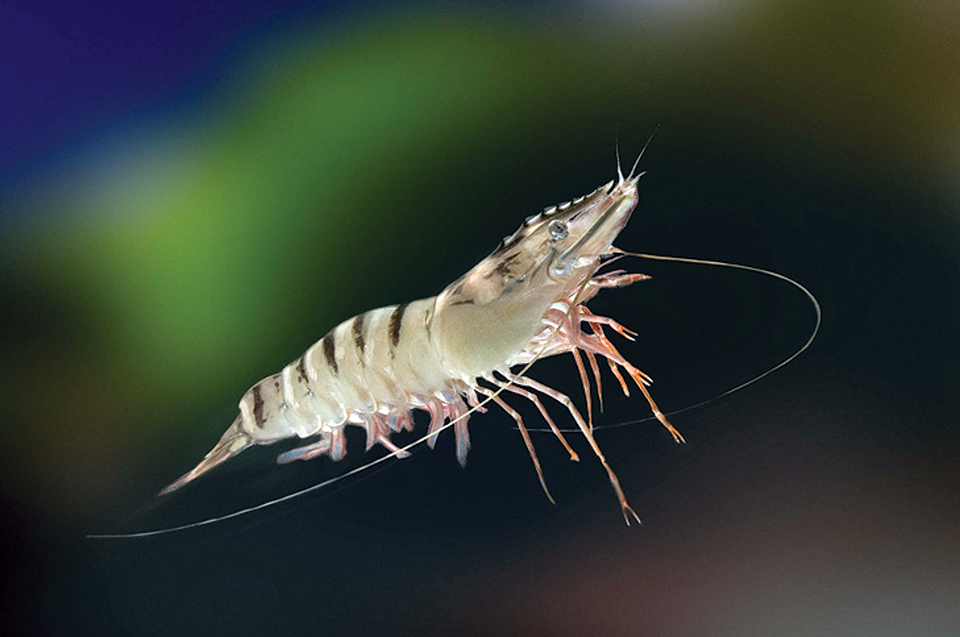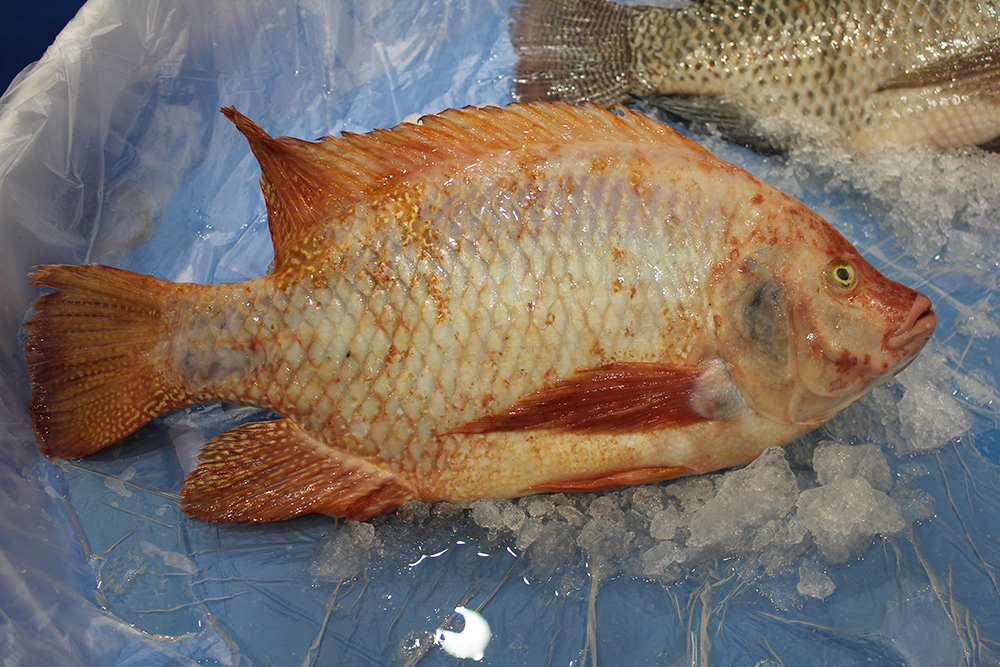Growth hormone, insulin-like growth factor (GH-IGF) axis a key hormonal regulator of growth

The USDA 103 research strain of channel catfish was developed by family selection for improved growth rate. Continued selection within this line is focused on growth, fillet yield, and resistance to Edwardsiella ictaluri, a bacterium that causes enteric septicemia in catfish. Better-growing broodstock are currently identified by conducting lengthy growth studies with large numbers of catfish families.
This is expensive and labor-intensive because 100 or more families are evaluated. The catfish industry is interested in identifying markers that could identify individuals with superior growth characteristics.
Growth regulation
The growth hormone, insulin-like growth factor (GH-IGF) axis is a key hormonal regulator of growth. Growth hormone acts on target tissues like the liver and muscle to stimulate production of insulin-like growth factors I and II, which in turn induce biological responses such as muscle growth through their respective receptors.
In 1999, Jaume Pérez-Sánchez and Pierre-Yves Le Bail first suggested the use of the GH-IGF axis as a marker for growth performance in fish. In support of their hypothesis, Ian Fleming and coauthors found in 2002 that growth hormone levels were higher in faster-growing domestic Atlantic salmon than in a wild salmon population. In 2006, Scott Lankford and Gregory Weber reported variations in growth performance among broodstock rainbow trout families were explained by variations in resting levels of growth hormone and IGF-I.
Stress resistance
The authors are also interested in improving stress resistance in channel catfish. Stress negatively impacts many production traits, including growth, disease resistance, and reproduction. Levels of cortisol, the primary stress hormone, are related to body weight in rainbow trout.
There may be a genetic basis for variation in growth performance and stress responsiveness in catfish. If so, genes and gene products related to the GH-IGF and stress hormone axes could be used as markers for selective breeding.
Research
At the Thad Cochran National Warmwater Aquaculture Center in Stoneville, Mississippi, USA, the authors tested the hypothesis that genes and gene products associated with the growth regulatory axis and stress axis could be used to explain differences in growth performance.
As part of this research, they measured the activity of genes involved in the GH-IGF network in fast- and slow-growing USDA 103 catfish families, which had been selectively bred for two additional generations. Fish of about 59 grams were fed for seven weeks, weighed, and tissues were taken for RNA extraction. The remaining fish were subjected to an acute 10-minute confinement stress in low water.
Results
Test results showed a significant relationship between plasma levels of cortisol and weight gain among the fast- and slow-growing catfish. Fish that gained more weight during the study tended to have lower levels of cortisol after they were subjected to the 10-minute stressor.
There were no differences between the fast- and slow-growing families for growth hormone receptor gene activity in the liver or pituitary. IGF-II gene activity in the muscle was higher in the fast-growing fish, but there was no difference for this gene in the livers of the fish.
(Editor’s Note: This article was originally published in the September/October 2007 print edition of the Global Aquaculture Advocate.)
Now that you've reached the end of the article ...
… please consider supporting GSA’s mission to advance responsible seafood practices through education, advocacy and third-party assurances. The Advocate aims to document the evolution of responsible seafood practices and share the expansive knowledge of our vast network of contributors.
By becoming a Global Seafood Alliance member, you’re ensuring that all of the pre-competitive work we do through member benefits, resources and events can continue. Individual membership costs just $50 a year.
Not a GSA member? Join us.
Authors
-
Brian C. Peterson, Ph.D.
Thad Cochran National Warmwater Aquaculture Center
U.S. Department of Agriculture
Agricultural Research Service
Stoneville, Mississippi 38776 USA -
Brian C. Small, Ph.D.
Thad Cochran National Warmwater Aquaculture Center
U.S. Department of Agriculture
Agricultural Research Service
Stoneville, Mississippi 38776 USA -
Geoffrey C. Waldbieser, Ph.D.
Thad Cochran National Warmwater Aquaculture Center
U.S. Department of Agriculture
Agricultural Research Service
Stoneville, Mississippi 38776 USA -
Brian G. Bosworth, Ph.D.
Thad Cochran National Warmwater Aquaculture Center
U.S. Department of Agriculture
Agricultural Research Service
Stoneville, Mississippi 38776 USA
Tagged With
Related Posts

Health & Welfare
Black tiger domestication, selective breeding advance in Australia
Using clear-water tank systems, CSIRO and a collaborating farm have advanced the domestication of black tiger stocks in Australia.

Health & Welfare
10 paths to low productivity and profitability with tilapia in sub-Saharan Africa
Tilapia culture in sub-Saharan Africa suffers from low productivity and profitability. A comprehensive management approach is needed to address the root causes.

Health & Welfare
A holistic management approach to EMS
Early Mortality Syndrome has devastated farmed shrimp in Asia and Latin America. With better understanding of the pathogen and the development and improvement of novel strategies, shrimp farmers are now able to better manage the disease.

Intelligence
Adding value to tilapia to tap into U.S. market
New markets for tilapia and expansion of existing ones can be created by planning and implementing properly designed geographic strategies to meet discriminating consumer preferences. Low labor costs in most producing countries promotes value-adding by the production of fresh fillets.


